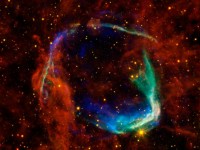
While parts of the world experience economic hardship, a team of astronomers co-led by Professsor Philip Best at the Institute for Astronomy in Edinburgh has found an even bigger slump happening on a cosmic scale.
In the largest ever study of its kind, the international team has established that the rate of formation of new stars in the Universe is now only 1/30th of its peak and that this decline is only set to continue. The results were published today in the journal Monthly Notices of the Royal Astronomical Society.
Recycling stars
The accepted model for the evolution of the Universe suggests that stars began to form about 13.4 billion years ago, or around three hundred million years after the Big Bang. Many of these first stars are thought to have been monsters by today's standards, and were probably hundreds of times more massive than our Sun. Such beasts aged very quickly, exhausted their fuel, and exploded as supernovae within a million years or so. Lower mass stars in contrast have much longer lives and last for billions of years.
Much of the dust and gas from stellar explosions was (and is still) recycled to form newer and newer generations of stars. Our Sun, for example, is thought to be a third generation star, and has a very typical mass by today's standards. But regardless of their mass and properties, stars are key ingredients of galaxies like our own Milky Way. Unveiling the history of star formation across cosmic time is fundamental to understanding how galaxies form and evolve.
In the new study, the scientists used the UK Infrared Telescope (UKIRT), the Very Large Telescope (VLT) and the Subaru telescope to carry out the most complete survey ever made of star-forming galaxies at different distances, with around ten times the data of any previous effort. With the range of distances, the time taken for the light to reach us means that we see identically-selected galaxies at different periods in the history of the universe, so we can really understand how conditions change over time.
"You might say that the Universe has been suffering from a long, serious 'crisis': cosmic GDP output is now only 3% of what it used to be at the peak in star production! The future may seem rather dark, but we're actually quite lucky to be living in a healthy, star-forming galaxy which is going to be a strong contributor to the new stars that will form." David Sobral, former PhD student at the Institute for Astronomy, who led the paper.
By looking at the light from clouds of gas and dust in these galaxies where stars are forming, the team were able to assess the rate at which stars are being born. They find that the production of stars in the Universe as a whole has been continuously declining over the last 11 billion years. Half of the stars in the Universe were born in the 'boom' that took place between 11 and 9 billion years ago and it took more than five times as long to produce the rest. If the measured decline continues, then no more than 5% more stars will form over the remaining history of the cosmos, even if we wait forever.
Professor Best added "While these measurements provide a sharp picture of the decline of star-formation in the Universe, they also provide ideal samples to unveil the even more fundamental mystery which we are continuing to work to solve: why?"
Image gallery
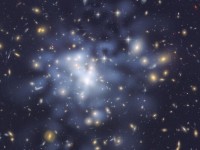
People around the world are invited to help solve one of the Universe's enduring mysteries.
Astronomers from the School of Physics & Astronomy have launched a public competition to help them learn more about dark matter, which accounts for 95 per cent of the mass of the Universe but cannot be seen and is little understood.
The researchers have joined forces with crowdsourcing data science website Kaggle and Winton Capital Management to find people who are interested in taking up the challenge. It is hoped the contest will inspire thousands of people to tackle the problem, using a variety of techniques.
The competition is expected to attract people who solve numerical problems for a living, such as scientists, statisticians and data engineers, who may find a solution by adapting an existing problem-solving tool from a field of expertise outside astronomy.
"By encouraging thousands of people to focus on a problem, we have a good chance of making progress quickly. This competition could make a real difference in solving an enigma that has puzzled astronomers for decades." David Harvey, School of Physics & Astronomy, University of Edinburgh
Dr Tom Kitching, of the University's School of Physics & Astronomy, said: “This kick-starts a new way for cutting edge science to interact with the private sector. Scientists have problems that need solving, data scientists world-wide are searching for interesting problems and exciting career opportunities. By working together it’s a win-win situation: the problem of solving dark matter gets a boost, the competition winners receive a prize.”
Prizes of US$12,000, US$5,000 and US$3,000 are being provided by Winton, which uses similar data science techniques to build automated trading systems for financial markets.
Mapping dark matter
Dark matter is known to cause galaxies to form clusters in space. Scientists want to develop ways to analyse images of these galaxy clusters, taken by the Hubble telescope. This will enable them to better understand how the clusters have formed, and create a map of dark matter, giving insight into its make-up.
The Observing Dark Worlds competition can be found at http://www.kaggle.com/c/DarkWorlds
Entrants have until 16 December to submit their ideas.
Image gallery
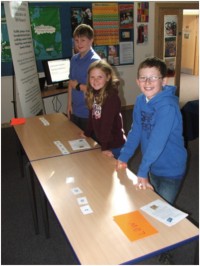
Mario Antonioletti and Iain Bethune of EPCC write here about EPCC's participation in two science festivals.
We demonstrated the power and utility of supercomputers at the British Science Festival in Aberdeen and Bang Goes The Borders in Melrose. At both events the audience showed a high level of interest in finding out what supercomputing is all about.
Our goal was to encourage the general public to interact directly with a supercomputer. We already had the supercomputer – HECToR, the UK's national supercomputing service – but we needed an application.
Visual Molecular Dynamics (VMD) is an application that allows systems to be visualized while being simulated by an underlying code. We chose NAMD2 to run the simulation as it is a supported application on HECToR and is well integrated with VMD. Not only does VMD let you visualize a system as it runs – including zooming, rotating and panning - but it also allows external forces to be applied to an atom or molecule. These are fed back into the simulation in real time.
Scientific simulation
Now we required an interesting simulation to tell a compelling story.
Professor Charles Laughton (University of Nottingham) has studied the thermodynamics of ligand binding using the mouse major urinary protein3. The simulation itself is simply a protein embedded in a water molecule. Inside the protein is a pheromone molecule – the protein acts as a slow release for any of the more volatile pheromone particles that may be trapped inside.
Using NAMD to model the system and VMD to visualise it, we created a demo where the audience could apply external forces to try to pull the pheromone out of the protein.
Thanks to Cray, we had a Cray XT4 blade to show alongside the demo. This is the type used in HECToR and it was a big crowd pleaser!
Demonstrating parallel algorithms
We also wanted to convey how a task could be performed faster by following a parallel algorithm (this is the set of steps required to solve a specific problem using several computer processors or cores working at the same time).
We printed cards numbered 1–60, shuffled a subset of them and asked a willing volunteer to sort them. Invariably this took too long, so we stopped this early having demonstrated the point. We then got several members of the audience to act as computer cores. They were each given a subset of cards which they sorted by swapping highest and lowest numbers, until all the highest cards were at one end of the line and all the lowest were at the other.
Having played the part of a supercomputer, the audience moved on to trying to pull the pheromone out of the mouse protein, with the demo running on 256 cores remotely on HECToR while being displayed locally using VMD at Aberdeen. So not only did our audience get to play the part of a supercomputer, they also got to play with the real thing!
We also took our demo to Melrose’s “Bang Goes The Borders” festival, which offers children a chance to experience science from laser physics to zombies – and now supercomputers too.
Image gallery

Prospective postgraduate students are warmly invited to visit the School of Physics & Astronomy during the next Open Day on Friday 23rd November.
PhD studies in Physics and Astronomy
If you have, or are likely to graduate with, a 2.1 or first-class degree in Physics or Astronomy, why not consider taking doctoral studies in this School?
The Postgraduate Open Day offers a unique opportunity to hear about the PhD programmes and projects that we offer, and for students to discuss prospective studies with academic staff. Current students will be there to tell you what it is like, and there will be tours of the building with staff on hand to explain experimental work. Last but least, information on funding will be available, for there are scholarships to cover tuition fees and living expenses. Informal one-to-one interviews may also be possible, depending on the availability of academic staff.
Please see our timetable for the day here: /studying/postgraduate-research/postgraduate-open-day
The MSc in High Performance Computing
The MSc in High Performance Computing (HPC) provides an excellent grounding in HPC technologies and their practical application. It will appeal if you have a keen interest in programming and would like to learn about HPC and parallel programming.
The MSc provides a doorway to a wide range of careers, including computational science research and commercial software development. Current students are welcome to join the Postgraduate Open Day to meet staff and current students and learn about what the MSc and the University have to offer.
Registration is required. See link below.
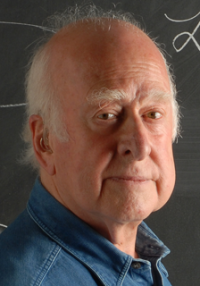
Professor Peter Higgs has been presented with a specially-commissioned medal in recognition of his outstanding work, which led to the discovery of a Higgs-like boson.
“Professor Higgs’ achievements have shaped Man’s understanding of Nature at the most fundamental level.” Professor Sir John Arbuthnott, President of the Royal Society of Edinburgh
Read the full story on the RSE's website.
Image gallery

Andy Buckley and Jennifer Smillie, two researchers in the School's Institute for Particle and Nuclear Physics, have been appointed Royal Society University Research Fellows. The Fellowship scheme aims to give outstanding scientists, who have the potential to become leaders in their chosen fields, the opportunity to build an independent research career.
"This fellowship is a wonderful award. It will allow me to focus on a long-term research programme into the fascinating area where the physics of the Higgs boson and the strong force meet. I'm thoroughly looking forward to the work, and the additional opportunities that association with the Royal Society has to offer." Dr Andy Buckley, Particle Physics Experiment, School of Physics & Astronomy
"I was delighted to be awarded this fellowship. It will allow me to focus on my own programme of research for the next five years. With the recent discovery of the Higgs boson, this is a pivotal time for particle physics and I'm really looking forward to making my contribution to the next developments." Dr Jenni Smillie, Particle Physics Theory, School of Physics & Astronomy
Two other University researchers - Sarah Reece and Gerben van Ooijen, both Biological Sciences - were also chosen.
Image gallery
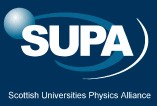
Up to 15 fully-funded Prize PhD Studentships and over 100 other funded PhD places available in Physics in Scotland.
The Scottish Universities Physics Alliance (SUPA) opens a single door into all Physics PhDs in Scotland. When you apply for a SUPA Prize PhD Studentship, you will also be considered for all other funded places available in Physics departments in Scotland.
Themes
Major themes pursued by researchers in SUPA are:
- Astronomy and Space Physics
- Condensed Matter and Material Physics
- Energy
- Nuclear and Plasma Physics
- Particle Physics
- Photonics
- Physics and Life Sciences
Eligibility
All Physics PhD students in Scotland are considered SUPA Graduate School students and are eligible to attend all educational and training activities.
Deadline
Applications must be made by 31st January 2013.
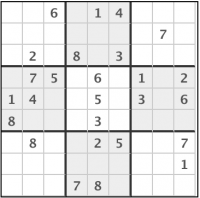
Senior Honours student Alex Williams' project has been published in leading journal Physical Review.
His paper "Paramagnetic and glass transitions in sudoku" involved a study of the statistical mechanics of a model glassy system based on sudoku. Defining an energy and temperature based on the number of errors on a sudoku grid, Alex used methods devised at Los Alamos in the Manhattan project to reveal similarities between properties of sudoku puzzles and magnetic systems.
The “sudoku Hamiltonian” exhibits two transitions as a function of temperature: a paramagnetic and a glass transition. Of these, both transitions are associated with an entropy change. Paramagnetism measured from the dynamics of the Monte Carlo run shows a peak in specific heat, while the residual glass entropy is determined by finding multiple instances of the glass by repeated annealing.
There are relatively few such simple models for frustrated or glassy systems that exhibit both ordering and glass transitions; sudoku puzzles are unique for the ease with which they can be obtained, with the proof of the existence of a unique ground state via the satisfiability of all constraints. Simulations suggest that in the glass phase there is an increase in information entropy with lowering temperature. In fact, we have shown that sudoku puzzles have the type of rugged energy landscape with multiple minima that typifies glasses in many physical systems.
Alex's code also solves sudoku puzzles.

Researchers from the Institute for Condensed Matter & Complex Systems have published a paper in Physical Review Letters which sheds light on how bacteria can become resistant to antibiotics very rapidly in some environments, but not in others.
The emergence of disease-causing bacteria which are resistant to known antibiotics is one of the most important current global health challenges. Drug-resistant "superbugs" kill thousands of people in the UK every year. This is a growing problem, because new antibiotics are not being discovered fast enough to keep up with the rate of evolution of resistance.
Theoretical model
Using a simple theoretical model of a bacterial population which expands to colonize a new territory, Philip Greulich, Bartlomiej Waclaw and Rosalind Allen show that a non-uniform concentration of antibiotic can greatly speed up the evolution of resistance, compared to the case where the drug is evenly distributed. Non-uniform drug distributions are expected to be very common: for example, drugs in our body accumulate to different levels in different organs. Importantly, the speedup in evolution of resistance that is predicted by the model depends on the sequence of genetic mutations by which the bacteria become drug resistant. It only happens if all the mutations along the pathway increase the drug resistance. Unfortunately, this seems to be the case for many commonly-used antibiotics.
This research shows that simple, statistical physics models can provide important insights into biological problems. The theory developed by the Edinburgh researchers may also be relevant to the evolution of cancer cells resistant to chemotherapeutic drugs, suggesting that the highly non-uniform microenvironments found inside tumours may present a major obstacle to the successful treatment of the tumour before drug resistance emerges.
Image gallery
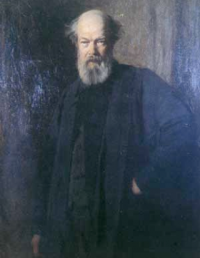
The Tait Medal is awarded to the best final year students in Mathematical Physics or Mathematics & Physics. This year's winners are Alastair Heffernan, Vladimir Prochazka and Mara Ungureanu. Our congratulations to all three winners.
"This year there were three excellent candidates, all with excellent results, so we decided to give them a medal each. This is very unusual: it last happened in 1979." Richard Ball, Professor of Mathematical Physics
Tait Institute
The Tait Institute is devoted to teaching and research in mathematical physics. Founded by Nick Kemmer in 1955 in honour of Peter Guthrie Tait, it was re-established in 2011 as the focus for mathematical physics in Scotland.
The members of the Tait Institute teach a range of undergraduate degrees in Mathematical Physics. Research covers a wide range of areas: from string theory and cosmology to particle physics, statistical mechanics and high performance computing.
The Tait Institute supports international visitor, workshop and summer school programmes in conjunction with SUPA and SUSSP. Annually, it hosts the Robin Schlapp Lecture, given by some of the most distinguished mathematical physicists in the world.

